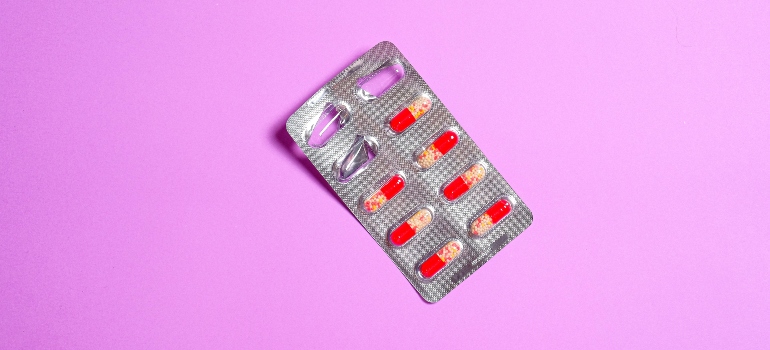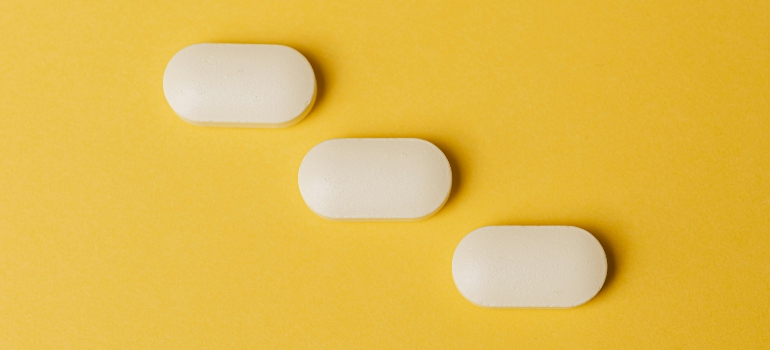In today’s world, where various medications and substances are readily available, it’s increasingly common for individuals to combine different drugs, whether prescribed or recreational, in search of enhanced effects or relief. However, what might seem like a harmless experiment or a shortcut to desired outcomes can quickly turn into a dangerous situation with serious health consequences. In this blog post, we’ll explain the dangers of mixing drugs, and raise awareness of how different substances can interact within the human body. From potentiated effects to unforeseen reactions, understanding these risks is crucial for safeguarding one’s health and well-being.
Polydrug Use and Its Dangers
Polydrug use refers to the practice of consuming multiple substances simultaneously or within a short timeframe. This can include mixing prescription medications, over-the-counter drugs, alcohol, and illegal substances like marijuana, cocaine, or opioids. The significant concern with polydrug use lies in the heightened risk it poses for various adverse effects on physical and mental health.

When different drugs are combined, they can interact in unpredictable ways within the body. These interactions can amplify the effects of each substance, leading to intensified intoxication, impaired judgment, and increased risk of overdose. For example, mixing alcohol with opioids or sedatives can depress the central nervous system to dangerous levels, potentially causing respiratory depression or even death.
Moreover, polydrug use complicates addiction treatment and recovery. Since individuals may become dependent on multiple substances, addressing their substance abuse issues becomes more challenging. Withdrawal symptoms can be more severe, and the risk of relapse remains high due to the diverse range of substances involved.
Increased Risk of Overdose
Mixing drugs can significantly increase the risk of overdose because the combined effects of multiple substances can be unpredictable and much more severe than the effect of any single drug on its own. First of all, different drugs can have opposite effects on the body’s systems. For example, one drug might stimulate the system while another depresses it. This conflict can create stress on the body, leading to critical failures in bodily functions, such as breathing or heart rate, which can result in an overdose.
Additionally, certain drug combinations can produce new, toxic chemicals in the body, leading to organ damage or failure. This increased toxicity can quickly reach levels that the body is unable to manage, causing an overdose. Some of the most dangerous substances to mix include:
- Alcohol and opioids (e.g., heroin, oxycodone): Both substances depress the central nervous system, which controls vital functions like breathing and heart rate. Mixing them can lead to respiratory failure, coma, or death.
- Alcohol and benzodiazepines (e.g., Xanax, Valium): This combination also depresses the central nervous system, significantly increasing the risk of fatal overdose.
- Stimulants and depressants (e.g., cocaine and alcohol): The use of a stimulant with a depressant can mask the effects of each, potentially leading the user to consume more of one or both substances than they can physically handle, raising the risk of heart problems or overdose.
- Different stimulants (e.g., methamphetamine and cocaine): Mixing stimulants can lead to dangerous increases in heart rate and blood pressure, potentially resulting in a stroke or cardiac arrest.

Amplified Side Effects
Amplified side effects are one of the dangers of mixing drugs. This means they can become much stronger than if the drugs were taken separately. This happens because drugs can interact in ways that increase their intensity or produce new, harmful effects. Why do they happen?
- Competition in the body: Sometimes, drugs compete with each other to be processed by the body. This can lead to an excess of one or both substances in the system, intensifying their effects.
- Combination effects: Certain drugs, when combined, can produce effects that neither would cause on its own. For example, mixing stimulants and depressants sends mixed signals to the body, which can be very stressful and confusing for the system.
- Overwhelming the system: The body has natural processes for breaking down and eliminating substances. Mixing drugs can overwhelm these systems, causing the substances to stay in the body longer at higher, more dangerous levels.
What Are The Side Effects?
These side effects can vary from common to rare but severe, life-threatening situations. Some of the risks include:
- Increased heart rate and blood pressure: Stimulants like cocaine can increase heart rate and blood pressure, and when mixed with other substances, the effect can be even more pronounced, leading to dangerous levels.
- Drowsiness and sedation: Sedatives and alcohol, both of which can cause drowsiness and sedation on their own, can lead to extreme lethargy or even loss of consciousness.
- Nausea and vomiting: Many drugs can cause nausea and vomiting as side effects, and mixing them can exacerbate these symptoms, leading to severe dehydration.
- Respiratory depression: This is when breathing becomes very slow and shallow. Opioids, when mixed with other depressants like alcohol or benzodiazepines, can significantly slow down breathing, risking insufficient oxygen to the brain and body, potentially leading to coma or death.
- Cardiac arrhythmias: Irregular heartbeats, or arrhythmias, can be caused by mixing drugs that affect the heart. This can lead to a heart attack, stroke, or sudden death if the heart fails to pump blood effectively.
- Seizures: Stimulants or withdrawal from certain drugs can cause seizures, and mixing substances can increase this risk. Seizures are sudden electrical disturbances in the brain that can lead to dangerous falls and injuries.
Interactions with Medications
When you mix different drugs, medications, and herbal supplements, they can interact in harmful ways, affecting how they work and increasing the risk of side effects. These interactions can occur between prescription drugs, over-the-counter medications, and even with certain foods or existing health conditions. For example, combining a blood thinner with an anti-inflammatory pain reliever might lead to excessive bleeding, or taking herbal supplements like St. John’s Wort can reduce the effectiveness of birth control pills.

Consulting a healthcare professional before combining any substances is crucial. They have the expertise to guide you on which combinations are safe and can provide personalized advice based on your health history and current medications. They can also adjust dosages as needed to ensure that any drugs you take together won’t harm your health.
Impaired Judgment and Decision-Making
Mixing drugs can change the way your brain works, affecting your ability to think clearly, make good decisions, and control your actions. When different substances are combined, their effects on the brain can become stronger or act in ways that we might not expect. For example, alcohol and marijuana both slow down your reaction time and impair your judgment, but when used together, these effects can be even more pronounced. This impaired judgment and decision-making can lead to risky behaviors.
You might feel more confident or less aware of the dangers of certain actions, such as driving under the influence, which puts you and others on the road at risk. Similarly, your ability to make safe choices about sex can be compromised, increasing the likelihood of engaging in unprotected sex, which can lead to sexually transmitted infections (STIs) or unintended pregnancies. Essentially, mixing drugs can cloud your judgment to the point where you might take actions you normally wouldn’t consider.
Mental Health Dangers of Mixing Drugs
When you take different substances together, they can change the way your brain functions and how you feel emotionally. For instance, some drug combinations can make feelings of anxiety or depression disorder worse, even if you initially feel better or more relaxed.
Drugs can affect the chemicals in your brain that are responsible for your mood, thoughts, and behavior. For example, while alcohol might temporarily make you feel more social or less worried, over time, mixing it with other substances like prescription medications or illegal drugs can lead to increased feelings of sadness or anxiety.
Moreover, if you’re using drugs to cope with existing mental health issues, mixing substances can make these issues more complicated and harder to treat. It can create a cycle where your mental health continues to deteriorate, leading to increased drug use in an attempt to self-medicate, which only worsens the problem.
In some cases, mixing drugs can also lead to new mental health issues, such as paranoia, hallucinations, or extreme mood swings. These effects can be frightening and confusing, not just for you but also for your loved ones.
Increased Risk of Addiction
Using multiple substances together can significantly increase the risk of developing a serious drug addiction. When you mix drugs, you’re adding extra strain on your brain’s natural chemistry. Each substance has its own way of altering the levels of chemicals in your brain, like dopamine, which is linked to pleasure and reward. By using multiple drugs, you’re pushing your brain to release more of these chemicals than it normally would. This can make the experience of using these drugs more intense and rewarding.

Secondly, this intensified experience can reinforce addictive behaviors. Your brain starts to associate the use of these drugs with a strong sense of pleasure or relief from pain, making you more likely to use them again. Over time, as these behaviors are reinforced, seeking and using the drugs can become a priority over other activities you used to enjoy.
Lastly, dependence on multiple substances can develop. This means your body starts to rely on these drugs to function normally. Dependence can also make quitting much harder because stopping the use of one substance might not relieve the dependence on another, leading to a cycle of continuous use to avoid withdrawal symptoms.
Importance of Harm Reduction Strategies
Harm reduction strategies play a crucial role in promoting safer substance use and reducing the risks associated with drug use. One of the most effective harm reduction approaches is to avoid polydrug use altogether. By sticking to one substance at a time, individuals can better understand its effects on their bodies and minimize the potential for dangerous interactions. Additionally, using substances in moderation can help mitigate the risk of developing dependence or experiencing harmful side effects.
Seeking help for substance abuse and addiction is also essential. Whether it’s through addiction therapy, support groups, or medical treatment, reaching out for assistance can provide individuals with the tools and support needed to overcome addiction and regain control of their lives. Furthermore, carrying naloxone or other overdose reversal medications can save lives in the event of an overdose, providing a crucial window of opportunity for emergency medical intervention.
Resources for Help and Support
For individuals struggling with polydrug use, there are various sources of help and support available. Addiction treatment centers offer comprehensive programs specifically designed to address substance use disorders, including polydrug use. These centers provide a range of treatments and therapies tailored to each individual’s unique needs. This may include detoxification to safely remove substances from the body, followed by various therapies, such as:
- Individual therapy for addiction
- Family therapy for addiction
- Holistic therapy for addiction
- Group therapy for addiction

Support groups, such as Alcoholics Anonymous (AA) or Narcotics Anonymous (NA), offer peer support and encouragement from others who have faced similar challenges. Additionally, there are numerous online resources available, including websites, forums, and informational materials, where individuals can find valuable information, connect with others, and access support services from the comfort of their own homes.
Understanding the Dangers of Mixing Drugs
The dangers of mixing drugs are profound and far-reaching, posing significant risks to both physical and mental health. However, there is hope for those struggling with polydrug use. Seeking help from addiction treatment centers can provide a lifeline toward recovery. At Harmony Ridge Recovery Center, we understand the complexities of substance use disorders, including polydrug use, and offer comprehensive programs tailored to meet each individual’s needs. From detoxification and counseling to ongoing support and aftercare services, we are committed to guiding individuals toward a healthier, substance-free life. If you or someone you know is battling polydrug use, don’t hesitate to reach out for help.



